"If you're looking to create a people strategy that truly makes a difference, you've come to the right place.
At The HR Consultants, we know a thing or two about how to get these right. With five years of experience helping clients like you and our founder having 20 years of experience in the field, we know what works. Our HR consultants are experts in creating people strategies that not only align with your business goals, but also foster a positive and inclusive workplace culture.
So, let's dive in and explore how you can develop a strong people strategy. Trust us, your future self (and team) will thank you!
Table of Contents
- What is a People Strategy?
- Why Do You Need a People Strategy?
- What Goes Into a Future-Proof People Strategy: Real-life Examples
- For People Strategies That Make Sense: The HR Consultants
- The Five Steps to Putting a People Strategy Together
- Frequently Asked Questions (FAQs)
What is a People Strategy?
So, what exactly is a people strategy, and why should you care about it? Simply put, a people strategy is your master plan for managing and developing your team in a way that drives your company towards success. It's about more than just hiring—it's about nurturing your employees, helping them grow, and creating an environment where they can thrive.
The Purpose of a People Strategy
The main goals of a people strategy are to enhance employee performance, motivation and engagement by creating a positive work culture. It's about making sure everyone knows their role, feels valued, and has the tools they need to succeed. By focusing on these objectives, you're setting up yourself and your team up for long-term business success.

What is The Difference Between People Strategy and Human Resources?
Now, you might be wondering how a people strategy differs from traditional HR. While HR often deals with the day-to-day administrative tasks like payroll, benefits, and compliance, a people strategy is more strategic and long-term. It’s about looking at the bigger picture—how can we develop our people to meet future challenges? How do we foster a culture that attracts top talent? It's proactive rather than reactive.
For an example of this, let's look at the employee lifecycle. This covers everything from the moment your employee joins your workplace to when they say their goodbyes.

When it comes to onboarding, for instance, HR covers the operational aspects, like on-the-job training. But a people strategy might take this further by having regular feedback sessions with the employee on how they're finding the training and then adjusting the training based on their feedback.
Why Do You Need a People Strategy?
A people strategy is essential because your people are your greatest asset. It’s a blueprint that outlines how you'll attract, develop, and retain talent, ensuring that your company culture is aligned with your business goals.
According to Qualtrics employee experience report, only 38% of new employees who had been with their company for six months or less had the intention to stay with the company for the next three years, in comparison to 65% of longer term employees. This really indicates how important it is to motivate employees right from the start!

Nurturing Top Talent from Within
Promoting from within is one of the best ways to retain your top talent. A well-thought-out people strategy involves creating transparent pathways for employee growth. This means regular check-ins, personalised development plans, and offering opportunities for additional training or mentorship
Think of it this way: if someone sees a clear path for career advancement and professional development, they’ll be motivated to stick around and work even harder.
Creating a Supportive Employee Experience
Wellness programs are a fantastic way to show employees that their health and well-being are a priority. These programs can include anything from gym memberships and mental health support to snacks in the office or break rooms (this one might make you the most popular!).
Supporting your employees through giving them feedback matters, too. When employees receive regular feedback, they feel more connected to their work and more invested in their personal and professional development, leading to increased employee retention.
Offering flexible working hours and respecting your employees' personal time also makes a difference. When people have a healthy work-life balance, they’re less likely to experience burnout and more likely to bring their best selves to work each day.
What Goes Into a Future-Proof People Strategy: Real-Life Examples
To think about what goes into a future-proof people strategy, let's look at some examples from real-life companies.
Create Strong Leaders
If you look into any successful organisation, you'll find strong leadership at the heart of it.
Promoting from within is both a great way to find strong leaders. It's a powerful motivator, too. Create clear pathways for career progression, give employees the opportunity to further their skills through mentorship programs or courses, and share examples of successful internal promotions.
Adobe stands out as a fantastic example of a company with a strong learning culture that keeps their employees at the top of their game. The constant growth and employee empowerment that comes from this gives Adobe a real competitive edge, as highlighted on the Adobe blog.
Use Technology for Your People Strategy
Using technology for data analysis can be a huge asset in managing your people strategy. Hold on a moment, data analysis? Don't we want our people strategy to be, well, people centric?
Absolutely, but data helps us to put everything together and understand what needs to be changed or kept the same. Integrating it into your people strategy can lead to a more holistic approach. For example, giving your employees surveys to fill out to measure their engagement and then using technology to compare the results to last month's and inform your engagement strategies.
Make Sure Your Workplace is Welcoming & Inclusive
Creating a workplace where everyone feels welcome and valued is one of the most important parts of your people strategy. That’s where DEI (Diversity, Equity, and Inclusion) initiatives come in.
According to a survey by Eagle Hill Consulting, 52% of employees said that it was important for them to know that DEI is a priority for their CEO.
The best way to roll out DEI initiatives is by using data analysis. You can use anonymous surveys, suggestion boxes and regular feedback sessions to understand your specific team's needs.
Support Remote and Hybrid Work
Qualtrics reported that hybrid employees have higher engagement rates than office employees in 2024, highlighting the power of working from home.
But hold on, hybrid employees also had higher engagement rates than fully remote employees. This is often because hybrid employees feel more connected to their team, which really highlights the importance of giving your remote employees the same level of support and community as your office workers.
How can you do this? A lot, and we mean a lot, of technology has been created to support remote workers since 2020. Weekly check-in calls are popular, especially when paired with messaging software that lets employees ask each other questions and stay connected in real-time.
Automattic, the company behind WordPress, is a prime example of excelling in remote work support, so much so that their employees can work from anywhere in the world and remain engaged.
One way that they do this is through coworking calls, which is when two or more co-workers work on their own projects, whilst on a call. They can chat as and when they like, creating the feel of a real office environment. Find out more about how Automattic prioritises social communication for their remote workers. There's some real goodies in there, like chair yoga on Zoom calls!

Show Your Investment
Above all, your people strategy should be authentic and demonstrate a genuine commitment to your team’s success and wellbeing. Authenticity is key to building trust and loyalty within your workforce. Show that you’re not just ticking boxes but are truly invested in creating a supportive and thriving workplace.
For People Strategies That Make Sense: The HR Consultants
Your employees might need something completely different to another company's, based on all sorts of things—the work they do, how many people they work with, the location of your office, and so much more.
At The HR Consultants, we're here to help you create a people strategy that really works for you and your team.
We believe that a successful people strategy isn’t one-size-fits-all. It’s about looking at the unique aspects of your company and your workforce, and then designing solutions that fit just right. With our expertise and personalised approach, we’ll help you build a strategy that supports your team’s growth and aligns with the business outcomes you're aiming for.
So, if you’re ready to take your people strategy to the next level, let’s have a chat. We’re here to make sure your strategy isn’t just good on paper, but actually supports your employees and makes a positive impact on your business.
The Five Steps to Putting a People Strategy Together
Now, like we've said, creating a people strategy is about looking at your employees as individuals. We've put together this step-by-step guide to help you do just that.
Step One: Decide What You Want to Achieve
First things first, what do you want to achieve with your people strategy? Maybe you want to boost employee engagement, reduce turnover, or create a more inclusive culture. Whatever it is, get clear on your goals.
Next, gather some data. Look at employee turnover rates, engagement scores, and performance data. This will help you see where you stand and what needs work.
Look for trends and patterns in the data. Are there specific departments with higher turnover rates? Is employee engagement lower at certain times of the year?
Step Two: Set Objectives
What are the main problems that need fixing? If you notice a lot of employees are leaving within their first year, that’s a red flag. Based on the issues you’ve identified, set some specific, measurable goals. For example, aim to cut turnover by 10% over the next year or boost engagement scores by 15%.
Step Three: Ask for Feedback
Get your employees involved. Use surveys, focus groups, and one-on-one meetings to hear about their experiences, challenges, and ideas for improvement. Pull together all the feedback to spot common themes and areas that need attention and then show your team that their input matters. When they see that their feedback is shaping the new strategy, they’ll be more excited and committed to the changes.
Step Four: Present the Strategy
Hold a kick-off meeting to explain the new strategy. Walk everyone through the goals, the steps to achieve them, and how each person’s role fits into the bigger picture. We recommend using charts, graphs, and infographics to make your strategy easy to understand at a glance. Be open about the challenges you’re facing and how the strategy will tackle them. Transparency builds trust and gets everyone on board.
Step Five: Adapt Over Time
Continuously ask for feedback to find out what’s working and what’s not. If something isn’t working, don’t be afraid to change it—it's so important to be flexible and regularly review the whole strategy. Celebrate wins, learn from any setbacks, and keep refining your approach to make sure it stays effective and relevant.

Frequently Asked Questions (FAQs)
Got more questions? Let's answer them!
If your questions are on what services we offer, feel free to get in touch with us our take a look at our packages.
What is the difference between an HR strategy and a people strategy?
Let’s clear up the confusion between an HR strategy and a people strategy—they might sound similar, but they’re quite different!
An HR strategy is all about the nuts and bolts of managing your workforce. Think of it as the operational side of things. It covers essential tasks like recruiting, payroll, benefits administration, and ensuring compliance with labour laws. Essentially, it’s about making sure the day-to-day HR operations run smoothly and efficiently.
On the other hand, a people strategy is more about the bigger picture and long-term goals. It focuses on how you can develop and nurture your team to align with your business objectives. A people strategy looks at employee engagement, development, and retention. It’s about creating a workplace where people can thrive, grow, and contribute to the company’s success.
In simple terms, while HR strategy keeps the ship running, people strategy is about steering it in the right direction.
For more information, check out our blog post on the differences between HR strategies and people strategies.
What is a people plan example?
As an example of a people strategy, imagine you’re running a tech start-up and you’ve noticed that while your team is incredibly talented, there’s a bit of a turnover problem and engagement isn’t where you’d like it to be. Your people plan might look something like this:
Vision: Create a supportive and engaging workplace where employees feel valued and motivated.
Goals: Reduce turnover by 15% within the next year and increase employee engagement scores by 20%.
Actions:
- Feedback Loops: Implement regular check-ins and quarterly surveys to gather employee feedback.
- Development Programs: Introduce training and mentorship programs to support career growth.
- Recognition Initiatives: Launch an employee recognition program to celebrate achievements and milestones.
- Wellbeing Efforts: Provide wellness programs, including mental health support and flexible working arrangements.
Using Data Analysis and Review: Track turnover rates monthly and measure engagement through survey scores and participation rates in programs, then hold quarterly reviews to assess progress and make necessary adjustments based on feedback and data."














